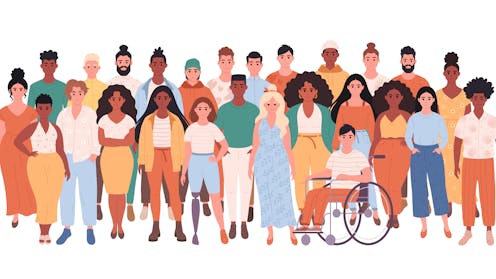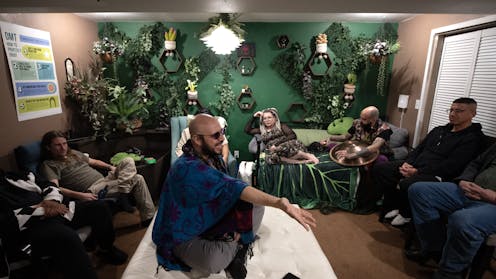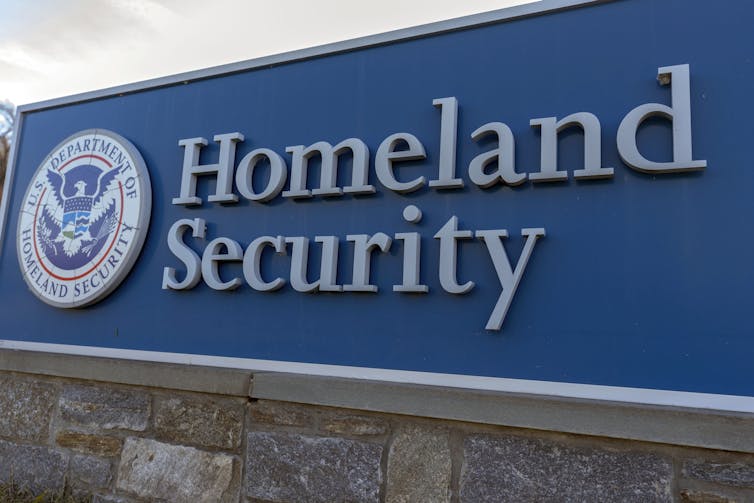Source: The Conversation – USA (3) – By Almut Winterstein, Distinguished Professor of Pharmaceutical Outcomes & Policy, University of Florida

A panel convened in July 2025 by the Food and Drug Administration sparked controversy by casting doubt about the safety of commonly used antidepressants during pregnancy. But it also raised the broader issue of how little is known about the safety of many medications used in pregnancy, considering the implications for both mother and child – and how understudied this topic is.
In the U.S., the average pregnant patient takes four prescription medications, and more than 9 in 10 patients take at least one. But most drugs lack conclusive evidence about their safety during pregnancy. About 1 in 5 women uses a medication during pregnancy that has some preliminary evidence that it could cause harm but for which conclusive studies are missing.
We are researchers in maternal and child health who evaluate the safety of medications during pregnancy. In our work, we identify medications that might raise the risk for birth defects or pregnancy loss and compare the safety of different treatments.
While progress has been slow, researchers and federal agencies have built monitoring systems, databases and tools to accelerate our understanding of medication safety. However, these efforts are now at risk due to ongoing cuts to medical research funding – and with them, so is the knowledge base for determining whether sticking with a therapy or discontinuing it offers the safest choice for both mother and child.
How pregnant women got sidelined
One big reason why so little is known about the effects of medications during pregnancy stretches back more than half a century. In the 1960s, a drug called thalidomide that was widely prescribed to treat morning sickness in pregnant women caused severe birth defects in over 10,000 children around the world. In response, in 1977 the FDA recommended excluding women of childbearing age from participating in early stage clinical trials testing new medications.

U.S. Food and Drug Administration
Ethically, there is long-standing tension between concerns about fetal harm and maternal needs. Legal liability and added complexities when conducting studies in pregnant women serve as additional barriers for drug manufacturers.
When drugs are approved, studies about whether they might cause birth defects are typically done only in animals, and they often don’t translate well to humans. So when a new medication comes on the market, nothing is known about how it affects people during pregnancy. Even if animal studies or the medication’s mode of action raised concerns, the drug can still be approved, though companies may be required to conduct studies observing its effects when taken during pregnancy.
Cause and effect
Of 290 drugs approved by the FDA between 2010 and 2019, 90% contain no human data on the risks or benefits for pregnant patients. About 80% of some 1,800 medications in a national database called TERIS, which summarizes evidence on medications’ risks during pregnancy, lack or have limited evidence about the risks for birth defects. Researchers have estimated that it takes 27 years to pin down whether a medication is safe to use in pregnancy.
As a result, many pregnant women stop treating their chronic diseases. In a U.S. study published in 2023, over one-third of women stopped taking a medication during pregnancy, and 36.5% of those did so without advice from a health care provider. More than half cited concerns about birth or developmental defects as the reason.
Yet uncontrolled chronic disease comes with its own toll on both the mother’s and the baby’s health. For example, some medications used to treat seizures are known to cause birth defects, but stopping them may increase seizures, which themselves raise the risk of fetal death.
Women with severe or recurrent depression who abruptly stop their antidepressants risk their depression returning, which is in turn associated with increased risk of substance use, inadequate prenatal care and other negative effects on fetal development. Stopping the use of medications
for treating high blood pressure also causes adverse effects – specifically, a greater risk of pregnancy-related high blood pressure that can cause organ damage, called preeclampsia; a condition called placental abruption, when the placenta detaches from the wall of the uterus too early; preterm birth; and fetal growth restriction. An online resource called Mother to Baby, created by a network of experts on birth defects, provides an excellent summary of the available data on medication safety during pregnancy.
The FDA in some cases requires drug companies to establish registries to track the outcomes of pregnancies exposed to certain medications. These registries can be useful, but they have shortcomings. For example, recruiting pregnant patients into them takes time and considerable effort, resulting in small sample sizes that may not capture rare birth defects. Also, registries typically follow a single medication and rarely include comparisons to alternative treatment approaches – or to no treatment.
What’s more, following the 2022 Dobbs v. Jackson Supreme Court decision overturning the constitutional right to abortion, women might be reluctant to add their names to a pregnancy registry or to provide data on prenatal detection of birth defects due to concerns about privacy and legal risks.
Decades of underfunding
In 2019, a task force established by the 21st Century Cures Act identified a major gap in knowledge about drug safety and effectiveness in pregnant and lactating women and recommended a boost in funding to fill it.
However, little has changed. A 2025 review by the National Academies of Sciences, Engineering and Medicine pointed out that research funding for women’s health topics has remained flat over the past decade, while the overall budget of the National Institutes of Health has steadily increased. The review recommended doubling the NIH funding allocated for such research, but this seems unlikely in light of the recent proposals to cut the overall NIH budget by 40%.
The National Institute of Child Health and Human Development funds the bulk of research on the safety of medications during pregnancy across federal agencies, although the institute has an appreciably smaller budget than most of its sister institutes such as the National Cancer Institute. Grants awarded are typically broad and take four to five years to complete, but they allow the more comprehensive assessments that are needed to support informed decisions considering outcomes for mother and child. For example, NIH-funded researchers have established a clear link between autism and prenatal use of valproate, a potent teratogen used to treat epilepsy and several mental health disorders.
The Centers for Disease Control and Prevention as well as the FDA have also funded specific pregnancy-related research. For example, following the COVID-19 epidemic, the CDC renewed its funding for studies that help expedite pregnancy safety studies for treatments that might be used for newly emerging infections. In response to emerging concerns about a substance called gadolinium, which is often used during MRI procedures, the FDA funded our own work on a study of almost 6,000 pregnant women, which found no elevated risk.
For healthy pregnancies, more research is critical
These efforts have laid a crucial foundation for evaluating medication safety and effectiveness during pregnancy. But keeping pace with the release of new medications and new ways they are used, as well as addressing the backlog of missing evidence for medications that were approved in the past millennium, remain a challenge.
Recent terminations of NIH-funded studies have focused on topics presumably relating to diversity, equity and inclusion. But research on safe and healthy pregnancies and on maternal health – for example, on the safety of COVID-19 vaccines during breastfeeding – has been affected as well.
The NIH has scaled back new grant awards by nearly US$5 billion since the beginning of 2025, and the odds for receiving NIH funding have plummeted. Proposed sweeping budget cuts for the CDC and FDA leave their role in supporting research on healthy pregnancies similarly uncertain.
In our view, removing or reducing ongoing investments in healthy pregnancies poses a danger to much-needed efforts to reduce excessive rates of stillbirths as well as infant and maternal deaths.
![]()
Almut Winterstein consults on medication safety issues to Merck, Syneos, Lykos and Novo Nordisk. She receives funding for pregnancy-related research from NIH, CDC, FDA, and the Gates Foundation.
Sonja Rasmussen receives funding from Harmony Biosciences, Axsome Therapeutics, Biohaven (acquired by Pfizer), Lundbeck, Novo Nordisk, and Myovant Sciences to serve on pregnancy registry scientific advisory committees. She also receives or has received funding from NIH, CDC, and FDA.
– ref. Pregnant women face tough choices about medication use due to lack of safety data − here’s why medical research cuts will make it worse – https://theconversation.com/pregnant-women-face-tough-choices-about-medication-use-due-to-lack-of-safety-data-heres-why-medical-research-cuts-will-make-it-worse-260783























